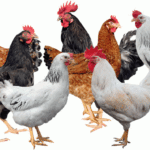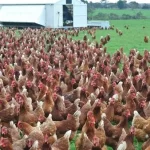Kenyan and other East African poultry producers like kieenyeji chickens, often called indigenous or traditional chickens, because of their toughness, disease resistance, and environmental adaptability. Conversely, improved Kienyeji chickens are a selectively developed subset of traditional Kienyeji chickens. The two are contrasted as follows:
Kienyeji Chicken
Adaptability: Adaptable to local conditions and capable of thriving in a free-range setting with little supervision.
Disease Resistance: Generally able to withstand common diseases that affect chickens, lowering the requirement for intensive veterinarian care.
Growth pace: Slower growth pace; it usually takes 6 months to reach market weight.
Egg Production: 80–100 eggs are laid annually by moderate egg producers.
Meat Quality: Preferred by many local customers, they are well-known for their tasty meat.
Rearing Cost: Lower because they don't need as much attentive care and can forage for a large percentage of their meals.
Improved Kienyeji Chicken
Adaptability: Continues to function effectively in native habitats while retaining the adaptability of traditional Kienyeji chickens.
Disease Resistance: Retains considerable resistance to disease, frequently enhanced by selective breeding.
Growth Rate: They grow more quickly, reaching market weight in three to four months, which increases their viability from an economic standpoint for farmers.
Higher Egg Production: Certain varieties can lay as many as 200–250 eggs annually.
Meat Quality: Although more uniform in size and quality, the meat is nonetheless tasty and reminiscent of classic Kienyeji chickens.
Cost of Raising: Slightly more expensive because of the possible need for more regimented management and feeding plans, but more productive.
Key Differences
Productivity: Compared to conventional Kienyeji chickens, improved Kienyeji chickens grow faster and produce more eggs.
Economics: For farmers trying to optimize output, enhanced Kienyeji chickens are more economically advantageous due to their rapid growth and higher egg production.
Management: Although both varieties are resilient, enhanced Kienyeji hens may need marginally better handling techniques in order to reach their maximum potential.
Market Preference: Both varieties are well-liked, however because of their higher output, upgraded Kienyeji chickens can offer a superior return on investment.
Click here to Buy Our Improved Kienyeji Chicken Farming Manual


